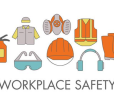Investing in real estate gives you a lot to think about. To start, there’s the benefit of being able to generate passive income, but only if you find a way around certain challenges.
Generating a positive income stream is possible if you structure your investment properly and start at the right time. Otherwise, you could end up dealing with maintenance and financial issues that will eat into your profits.
With all this in mind, can you still find success as a real estate investor in this market? The answer is a resounding yes, and it’s easy to see why.
Why Invest in Real Estate This Year?
Now is as good a time as any to invest in single-family and multifamily properties. Last year, the real estate sector took a nosedive when the pandemic forced people to move back to their hometowns and delay their real estate goals.
This year, amid vaccine rollouts and “back to onsite work” orders, the market is seeing a high demand for apartments and condos. This comes as young professionals (who make up the majority of renters) prefer to live near their workplaces or in remote-work friendly communities.
As the demand for living spaces rises, so does the median rent. Along with historically low interest rates, this high rent market is creating a favorable (and profitable) environment for investors to cash in on.
If you are looking to invest in real estate this year, now would be a perfect time to start your portfolio. Here are a few tips to help you get started:
1. Consider your risk profile

Just like with any other investment vehicle, determining your risk profile is crucial. This would mean knowing your tolerance for risk based on your financial situation and your personal goals.
Rental properties (whether for residential or commercial purposes) in large markets like LA or New York City require a large amount of capital. If you are looking to finance an apartment purchase, you will have to make sure the property generates high returns. This also raises the risk of failing to recover your initial investment, especially if the demand for rental housing slows down.
Before anything else, ask yourself if you can take the risk of buying a large multifamily property or start out small with a single-family home. The sooner you assess your appetite for risk, the better it would be to come up with an effective investment strategy.
But provided, make sure of avoiding real estate investment mistakes through your whole pathway.
2. Know your game plan
Choosing a risk profile is a matter of personal preference. There is no harm in acquiring a rental property that costs $500,000 or more. What matters is that you come up with a solid strategy that results in high returns.
Diversifying your portfolio has to be the most basic strategy you can use, but it’s not the only one. Depending on your risk profile, you need to choose a strategy that results in generating profits that will boost future growth.
You can try purchasing distressed properties or fixer-uppers at a fraction of their original value. Through a fix-and-flip strategy, you can make them market-worthy again by handling repairs and improvements. After that, you can either sell them at a higher rate or refinance using a long-term mortgage.
Another strategy to consider is buying a property and holding it for a certain amount of time. This allows you to leverage price appreciation over the short-term, so long as property prices keep rising. Regardless of the strategy, you are using, make sure to do your homework and get advice from veteran investors.
3. Know where to get financing

Your savings might not be enough to cover the down payment, but you can always bolster your finances through personal loans and contributions from people who are willing to be your investment partners under a joint venture agreement.
Apart from these sources, you can also tap into your retirement savings. If you are retiring this year or the next, you can use your self-directed IRA to directly purchase or through a limited liability partnership. Financing a real estate portfolio is possible even if you have set aside an amount lower than the purchase price of a rental asset.
4. Consider investing in REITs
If you want to enjoy high returns but you don’t want to manage property directly, you can always consider investing in a real estate investment trust or REIT. Basically, this is an entity that owns and manages a wide range of rental real estate from apartments to commercial buildings.
Operating as mutual funds, REITs allow you to earn stable dividends. The returns are adjusted based on risk factors and there is greater diversification across commercial and residential asset types.
However, REITs are still subject to risk. Your earnings will still be affected by how the market is performing. There is also the risk of entering into a fraudulent REIT, so you will need to do your due diligence before diving in.
5. Get property managers and an exit strategy

Being hands-on with your assets gives you greater control over the health of your portfolio. You get to call the shots and make decisions that involve maximizing your returns and planning an exit strategy.
The key to achieving positive cash flow lies in effective property management. Buildings deteriorate over time. By getting property managers tasked with handling repairs and improvements, you grow the property’s value and make it appealing to potential tenants.
In addition, property managers can also market the property to tenants. They can run social media campaigns and publish ads that will attract renters. If you are looking to sell your property after a year or two, make sure you have an exit strategy in mind.
You can promote the property to people who are also interested in real estate investing. That way, you can prepare for your next purchase. You can also have a tenant rent-to-own a unit or get a real estate agent to help you sell the property at a higher price.
Investing in real estate has a lot to offer anyone, from millennials to retiring boomers. As the market remains favorable to investors, it’s not to lose out on the benefits.
Read Also:




























